An exhibition titled ‘What were you wearing’ at the Museo del Traje in Madrid helps fight revictimization and rape culture through the clothing and experience of different women.
By Laura García Higueras
“What are you going to wear tonight?” is, surely, one of the most asked questions every Friday in conversations among friends, as part of the preparation ritual for the weekend’s plans. Of course, at that moment, no one is expecting that, hours later, it could end up turning into a condemning question: “What were you wearing?”
The wording that, to this day, is still repeated after experiencing episodes of sexual violence, regardless of how, when and where the events occurred. Hence, it has become the title of the exhibition promoted by the Spanish Ministry of Equality, which aims to reflect on the questioning and guilt to which victims of sexual assault are subjected because of the clothes they were wearing at the time they were assaulted.
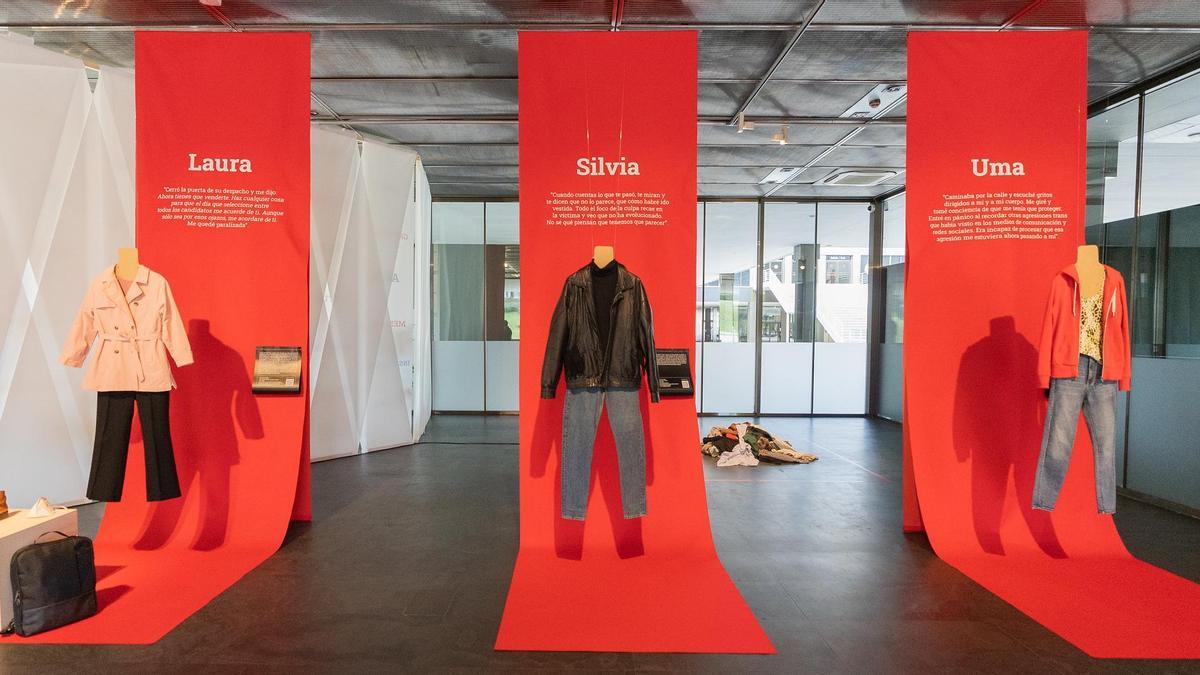
The exhibition, located at the Museo del Traje in Madrid (In Spanish, Costume Museum), under the Ministry of Culture and Sport, was open until April 30.
At the entrance, a mirror placed the public in front of their wardrobe chosen for the visit, and the definition of the word pattern: “model according to which other objects are produced”.
In the case of the exhibit, the term related to the rape culture, the re-victimization of women victims of sexual violence, and the serious etceteras that the exhibition sought to dismantle through the stories of eight women.
Their stories were shown through a recreation of the clothes they were wearing on the day they were assaulted. And they were accompanied with their intimate narratives, which brought the viewer face to face with a painful experience that was stitched into their bodies. Not because there was blood, torn panties or untied panties. They were worn, but clean clothes. Shoes included. And corresponding to different bodies, ages and styles.
The Ministry of Equality commissioned the exhibition to the communication agency Volando Vengo, with whom they had already collaborated in previous projects. The social worker and sociologist Cristina Mateos, a doctor specialized in gender violence, was one of its organizers and explains to ElDiario.es that the institution wanted to count on them for their “feminist conscience”, given the involvement of the victims that it was going to entail.
“We wanted to get out of the showcasing of violence and deaths,” she describes. She is also a professor, who has been mainly in charge of the social diagnosis and the accompaniment of the women who have shared their cases. “If we are making an exhibition to break patterns, we needed a re-educated look at sexual violence,” she explains. Moreover, she points out that it would not have been therapeutic to “recreate the pain, the blood and the harshness,” since it does not allow for recovery.
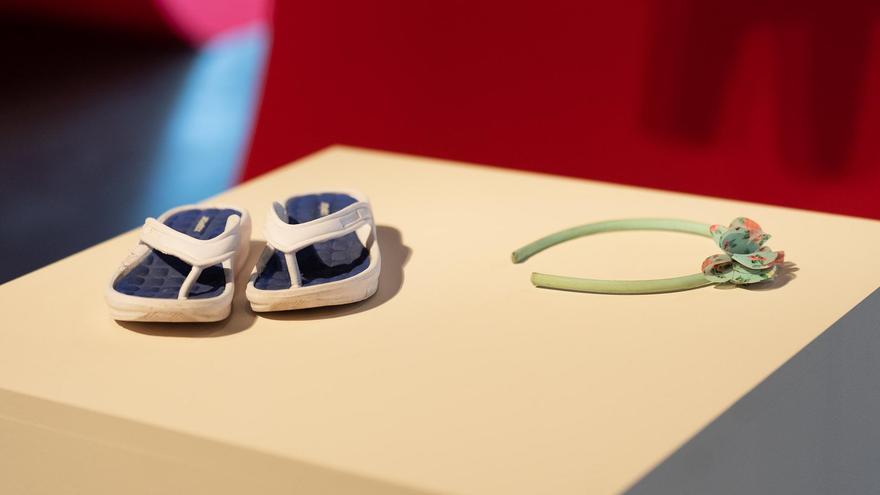
The garments of the “seamstresses”, as they were defined in the panels that were exhibited, are “woven together with the details of what they lived through”. Six of these women offered their stories for the exhibition; the other two, corresponding to an 80-year-old and a 20-year-old trans woman, were reconstructed from information on real cases published in the press.
Their testimonies accompanied the sets, in the form of text and also audio, which could be accessed through a QR code. And there was also information about each of them. The room was impressive for its diversity of objects, although one of the pieces stood out: a set of a colorful dress, knee-length tights, sandals and a child-sized headband.
They belonged to Adriana, a Colombian woman who was assaulted with impunity by her brother from the age of 4 to 11. They never believed her word because he was “the spoiled one” of the family. After emigrating from Colombia to Spain, she began a long process to escape the violence and heal. Years later, she found out that her nephew’s daughter was being sexually assaulted by her brother. “I started to relive what I had gone through and I had the feeling that the same thing had happened to this girl and others in the neighborhood,” she says.
She decided to act and testify at the trial.
Her words were shown alongside data from the Macro-survey on Violence against Women, carried out in 2019 in Spain by the Government Delegation against Gender Violence. The figures are heartbreaking: 39% of women who have suffered sexual violence before the age of 15 mention a male relative as the aggressor (13.5% the father or stepfather, 61% the brother or stepbrother and 27% another male relative).
The texts have also not contributed to the spectacle mentioned by sociologist and social worker Cristina Mateos: “People might think that they were going to hear how many times they have been assaulted or the damages they have suffered. But that would not have been ethical or instructive either. It was not our goal and could perpetuate violence against women.”
Art as a tool for recovery
The exhibition project originated in 2014 at the University of Oregon, prompted by professors Wyant-Hiebert and Jennifer Brockman, who were inspired by the poem “What was I wearing?” by PhD Mary Simmerling. They used stories gathered from personal interviews with students and, nearly 10 years later, more than 200 organizations and public institutions have copied this installation in countries around the world.
Mateos shares that in its adaptation to Spain, they broadened the focus so that it was not only linked to educational environments. They were looking to raise “a general awareness.” “In the narratives of sexual violence there has been manipulation. We have grown up with the idea that they were isolated cases, of deviant people in dark alleys, but it is not as we have been told. The figures reveal that 60 percent are related to known environments, including partners,” says the sociologist and social worker.
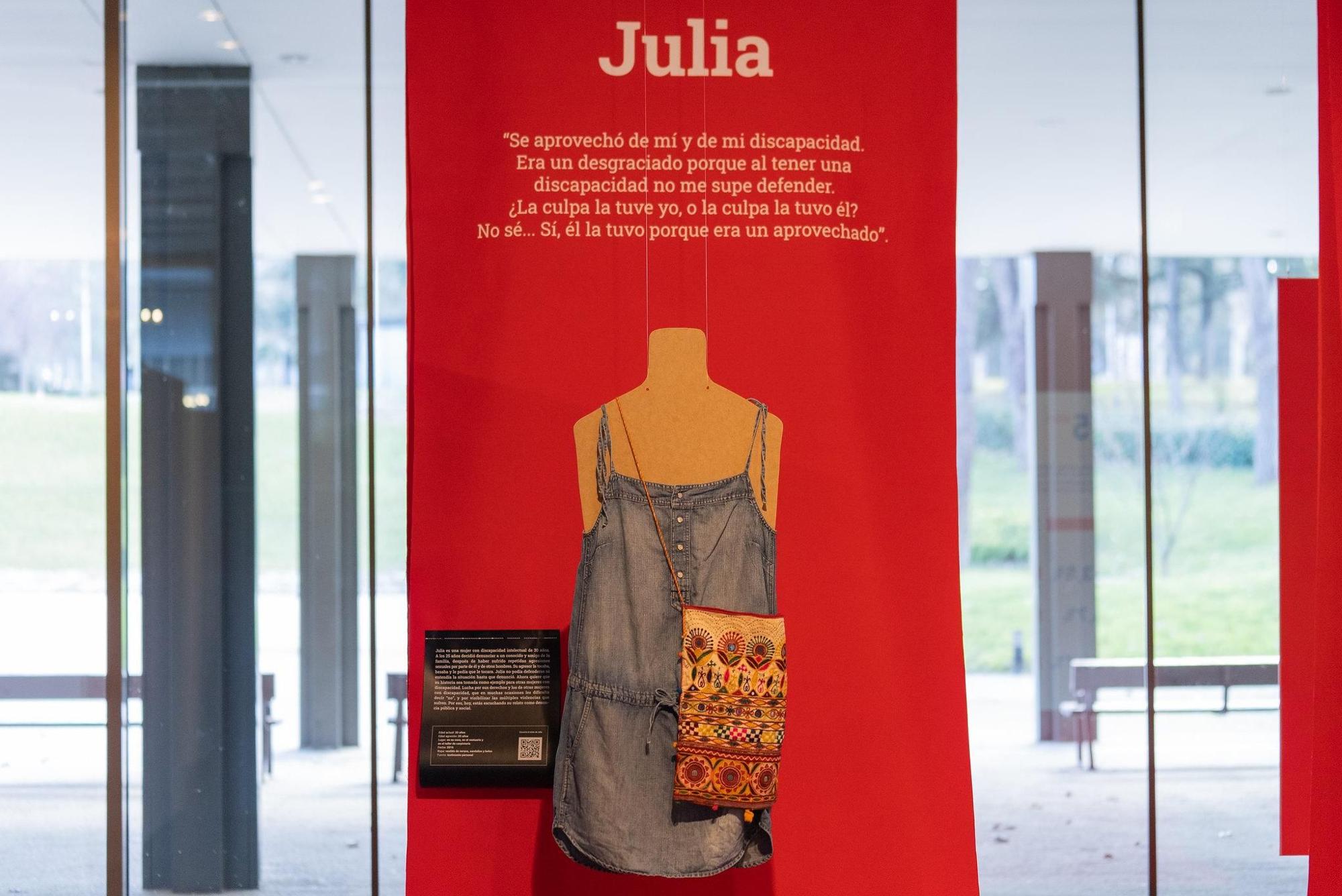
Above all, the goal was “to create an exhibition that looked after the victims, taking care of the stories, without making pornography of violence or rape. To relate the cases in order to raise awareness but without being sensationalist”.
In order to do so, they involved the women who shared their experiences in the creative process, to whom they also offered ongoing therapeutic support. “We wanted this exhibition to improve their quality of life, not affect it. It was vital not to leave them abandoned with a trauma worse than the one they had,” says Mateos. They have had power over the selection of every word, the search for clothes and even the furniture: “It was important that they could make decisions, that they could always express their needs. It was important for them to make decisions, for them to be able to express their needs, for this to be a space that gave them power,” he adds.
The center of the room featured eight garments, at the end of which was a sculpture of a heart woven on a panel titled Cutting the Patterns of Rape Culture. “It was necessary to describe the social, political and cultural framework and the media that were using to portray the stories far from the truth of the women who suffer the aggressions, which start from the patriarchal and rape culture that protects the aggressors,” says Mateos, sharing that the aforementioned sculpture allowed them to follow the common thread of patterning that structures the exhibition.
“It represents that sick social heart because sexual violence is something that affects all society,” she describes, “that there was beauty and art was a way to care for the pain and the women victims.”
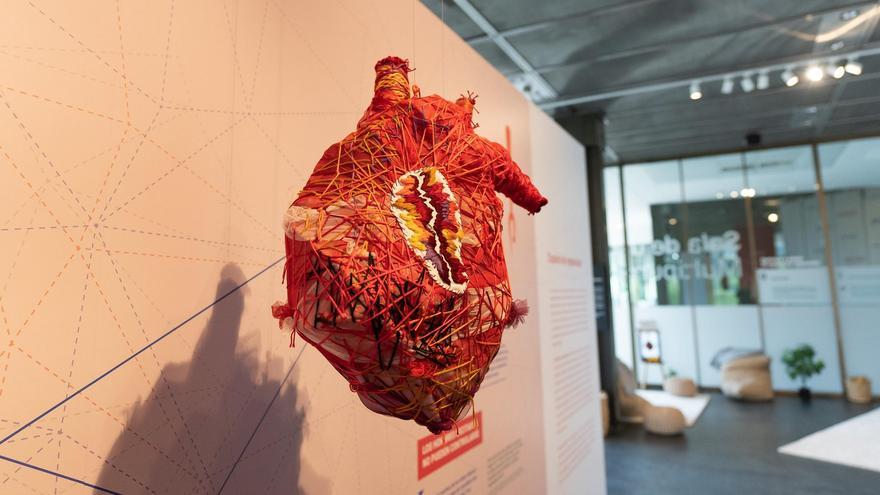
The interdisciplinary team behind the exhibition included people from different fields such as social workers, psychologists, designers, sculptors, visual artists and editors. Among them was the therapist Carmen Sánchez Romero who, according to Mateos, stressed the importance of art as a way of bringing this reality closer: “She kept telling us that sexual violence always generates a disaffection, a refusal to relate to what we are reading. An ‘I’m not that one’, ‘it’s not going to happen to me’, ‘this is unbearable’, ‘I don’t want to read it’, ‘I don’t want to see it’. It was important that the people who went to see the exhibition felt that they were in a safe and comfortable space, that their conscience was open.”
The reparations arena
Reading and listening to the testimonies and exploring the data work like stabs in the conscience, the stomach and even the throat. But the exhibition was not intended to be a place of destruction, unease or despair. On the contrary: at its culmination,, they have reserved what they call a ‘repair space’. “A place of refuge, a necessary stop to take distance from the pain and damage and connect with the emotional and hope. We invite you to stop inside it, rest, listen, breathe, reflect and also participate in this collective confection of our patterns,” a sign at its entrance pointed out.
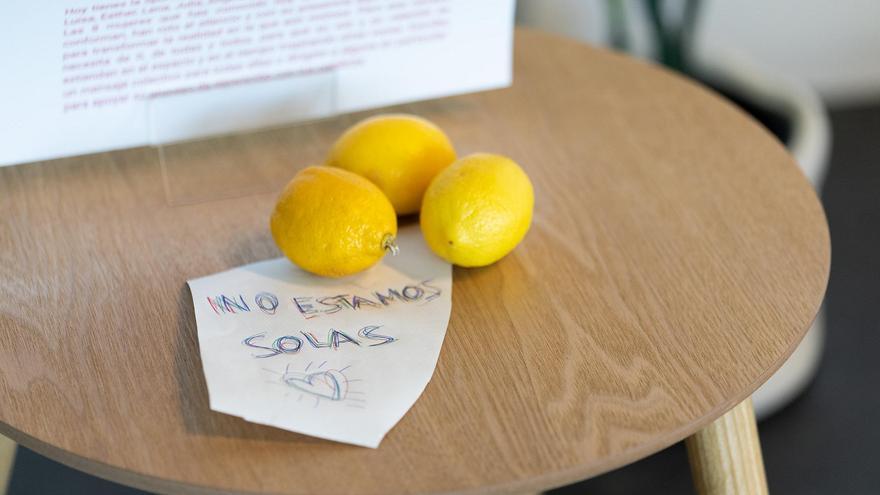
It was a warm area where light reigned. There were chairs, carpets, and water falling. There was also the option of accessing poems through QR codes, and sheets of paper and markers were available for anyone who wanted to leave a message. Different typographies, experiences, support and company converged in the small baskets of wicker that contained them. “It is a vindication of the spaces of reparation that they need. Also, so that along the itinerary you could sit down to breathe and say ‘damn’. A space for you, for reflection, to ask yourself questions,” says the social worker and sociologist.
Mateos claims this space as part of the essence of the exhibition: “We can all suffer sexual violence anywhere, but sexual violence can be overcome, reparation is possible. For this reason, the exhibition has been conceived as a thread that holds together the stories and pain of women victims of rape. This is how one of its posters described it: “The slow process of stitching their own wounds becomes, between these panels, and with the hope of a new patterning by society, part of a rite of healing and healing”.
This story was originally published in ElDiario.es (Spain) and is republished as part of the Human Journalism Network Programme, supported by the ICFJ, International Center for Journalists.
